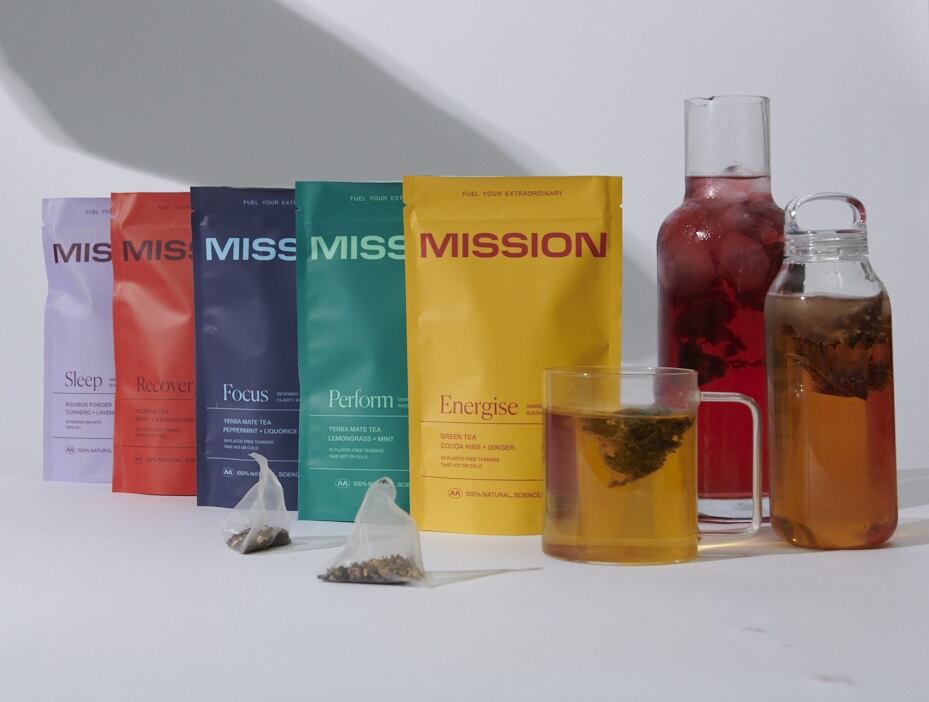In a bid to reinvigorate the tea aisle and meet consumers where convenience, health and flavor intersect, Lipton is rolling out new innovations across herbal teas and tea concentrates – formats that reflect how modern drinkers want to enjoy their tea: easy, customizable and healthy.
“We launched a range of concentrates on TAZO, including a matcha concentrate with strawberry, a watermelon cucumber concentrate and a peach mango with ginger. And we also launched a range of Lipton iced tea concentrates exclusively to Walmart,” said Alex White, R&D director for Lipton North America.
Lipton’s tea concentrate flavors include Black Tea with Lemon, Green Tea with Lemonade and Southern Sweet Black Tea.
White explained that the herbal tea and concentrate launches address clear whitespace in Lipton’s portfolio. Herbal teas represent the fastest-growing segment in the category, and concentrates have become an emerging format for consumers seeking natural ingredients and convenience, he said.
“We definitely feel we have the credibility and right to play in that space,” White added.
Lipton’s approach to herbal teas centers on flavor – a strategic decision that White said was driven by consumer feedback about the “medicinal” taste of some existing herbal options.
“The angle that we wanted to focus on was a good-tasting herbal tea,” he said. “These are very delicious blends that are enjoyable if you drink them on many occasions and quite moorish [pleasantly addictive] that way.”

Concentrates deliver convenience and customization
White described concentrates as a “great compromise” for today’s beverage shopper: natural, flavorful and fast.
“Tea, of course, is a natural offering,” he said. “But it does come with a prep hassle. Concentrates allow you to enjoy a perfectly natural product, but in seconds. They’re literally the equivalent of brewing those teas in a giant teapot and then packing them in Tetra Paks. They have very clean ingredient decks and are true to tea.”
What consumers love most, he added, is the versatility.
“They can enjoy them hot, iced, diluted to the strength they prefer. … They can add their milk of choice, or in the case of iced teas, they can add sparkling water,” White said. “We’ve even seen people use them as ingredients to bake desserts, cakes or even popsicles.”
When it comes to flavor development, White said Lipton leans into trending combinations that bring added value.
“We try to deliver products that give you the maximum added value,” he said. “That’s why most of our volume is represented by lattes. It’s not always easy for somebody to make a chai latte from scratch, other than popping to their local Starbucks.”
He noted that strawberry matcha, for example, was inspired by a popular trend in café culture.
“Matcha is on fire at the moment – to the point where even sourcing matcha is a challenge,” he said.
Looking ahead to 2026, Lipton plans to expand its matcha offerings into powdered lattes and K-Cups, with three new SKUs in development.
From sugar to stevia: Exploring natural sweetness
As consumer preferences around sugar evolve, Lipton is diversifying its sweetener strategy.
“Within the range, we try to offer options for every preference,” White said. “We have products that are sweetened with cane sugar, and we have products that are unsweetened and everything in between.”
White added that Lipton is also exploring natural sweeteners such as monk fruit and stevia leaf extract to meet growing demand for reduced-sugar options.
Herbal teas bring Lipton back to its roots
While Lipton’s black tea heritage remains central to its brand identity, its expansion into herbal blends marks an evolution toward broader health and wellness positioning.
“Black tea was the heritage territory where Lipton was born and raised,” White said. “We’re now expanding to other categories … and going forward, we’ll be focusing more on functional health and wellness.”
For 2025, the company launched a conventional herbal range focused on flavor while maintaining familiarity, “including the herbals that people naturally associate to certain benefits,” White said. “Mint is almost automatically associated with digestion and chamomile with relaxation,” for example.
Responsible sourcing and sustainability
As matcha demand surges, sourcing remains a challenge across the industry.
White said Lipton’s scale and 150-year history give it leverage with top suppliers, helping the company secure consistent supply while maintaining safety and sustainability standards.
Lipton’s commitment to sustainable sourcing dates back decades. “We’ve been pioneering the relationship of the category with Rainforest Alliance,” White said. “The very first Rainforest Alliance certified tea was a Lipton tea. … We pretty much pioneered Rainforest Alliance in tea, and a couple of decades later, it’s now the industry standard.”
Health, wellness and the future of tea
White noted that the tea category continues to benefit from health and wellness trends, which now encompass both physical and mental well-being.
“It’s all about health and wellness right now,” he said. “There are several macro areas – performance nutrition, preventative health, healthy aging, mental health, stress relief and energy management.”
Emerging GLP-1 use cases, he added, also are shaping the way consumers think about nutrition and beverage choices.
“There’s a lot of integration products popping up to accompany consumers on their GLP-1 journey,” White said, citing opportunities to incorporate more fiber and nutrient density into tea-based beverages.
“By far, the biggest area is probably stress management,” he added. “Both relaxation and energy boost are the most relevant for the US market.”




